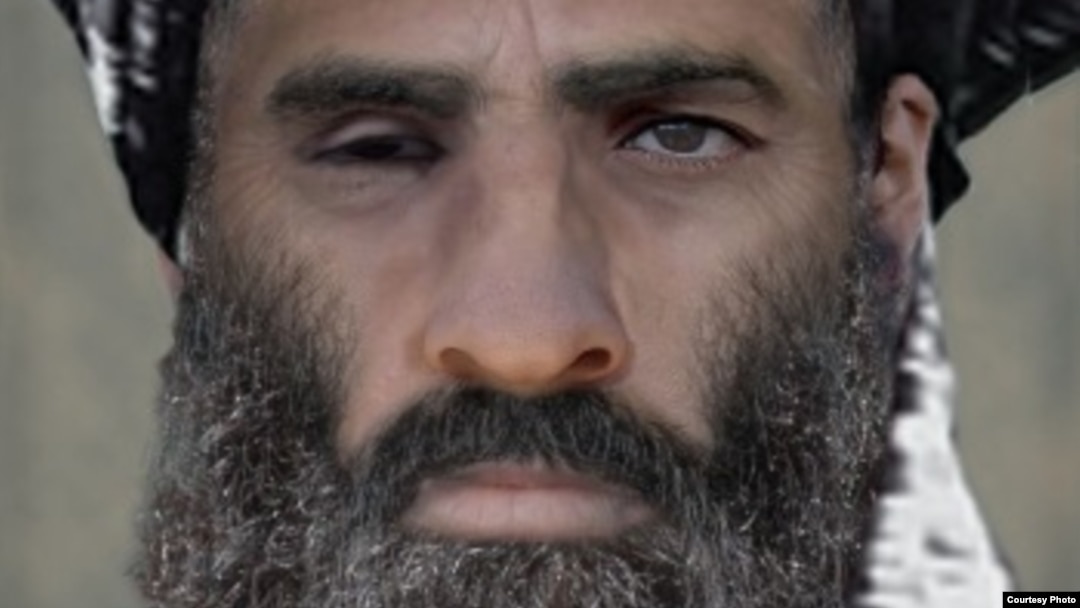The spiritual leader of the Afghan Taliban, Mullah Mohammad Omar, is dead.
The reclusive leader, who had not been seen in public since the U.S.-led invasion in 2001, died in 2013 of an illness at a hospital in Karachi, Pakistan, according to Afghanistan's National Directorate of Security.
Later on July 29, the Afghan government confirmed, "based on credible information," that Omar died in 2013 in Pakistan.
Years without any video or audio recordings had led to growing speculation that the shadowy militant leader could be seriously ill, or dead.
The Taliban has released several messages purported to be from Mullah Omar over the years -- one as recently as last month -- raising the question of who might be speaking on his behalf after his death.
Disgruntled Taliban commanders have called on the leadership to provide proof that Mullah Omar is still alive. Several commanders have recently sworn allegiance to the extremist group Islamic State (IS), believing Mullah Omar was no longer calling the shots. Taliban splinter groups have also emerged recently in the absence of any public appearances.
Confirmation of Mullah Omar's death would test the unity of the militant group, which has only had one leader. There is speculation that competing commanders could try to fill the vacuum, including the Taliban deputy leader Mullah Akhtar Mohammad Mansur and Mullah Omar's eldest son, Yuqub.
Mullah Omar's confirmed death could also affect an ongoing peace process between the Taliban and the Afghan government. A statement attributed to Mullah Omar last month said he welcomed a recent round of talks held in Pakistan. But there are deep divisions within the group over a potential political settlement with Kabul.
Despite leading the Taliban for nearly two decades, little is known about the man behind the militant Islamist group. The withdrawn, remote figure has hardly ever been photographed. His whereabouts were unknown, though he was believed to be leading the Afghan Taliban insurgency from neighboring Pakistan.
The U.S. State Department -- which has a $10 million bounty on his head -- described Mullah Omar as a tall male with a shrapnel wound to the right eye.
According to a biography published by the Taliban earlier this year, Mullah Omar was born in 1960 in the village of Chah-e Himmat, in the Khakrez district of Kandahar Province, the birthplace of the Taliban in the south of Afghanistan. He was from the Tomzi clan of the Hotak tribe.
His father, Moulavi Ghulam Nabi, died five years after Mullah Omar's birth. The family then moved to Uruzgan Province. Mullah Omar attended a madrasah, or religious school, according to the biography.
After the Soviet Union invaded Afghanistan in 1979, Mullah Omar left school and became a jihadist. He was injured four times and lost his right eye, according to his biography.
He was given the title of "Amir-ul-Momineen," or Leader Of The Faithful, in 1996, becoming supreme leader of the Taliban. It was that year that the Taliban gained control of Kabul, ousting the warring mujahedin factions that had been fighting a devastating civil war.
The Taliban ruled Afghanistan from 1996-2001, ushering in a fundamentalist regime that trampled on basic human rights. The Taliban was only recognized by three countries -- Pakistan, Saudi Arabia, and the United Arab Emirates.
Mullah Omar's alliance with Al-Qaeda leader Osama bin Laden prompted a U.S.-led invasion in 2001, in the aftermath of the September 11, 2001, attacks on New York and Washington.


